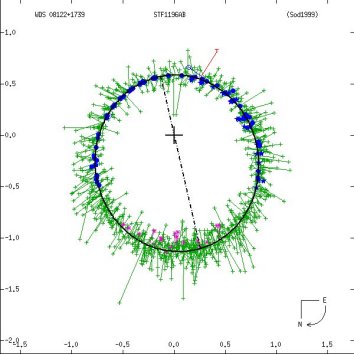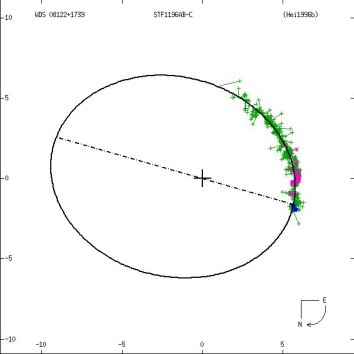

 |
 |
| At left, Zeta Cancri B orbits Zeta Cancri A (at the cross) at an average separation of 22 AU over a period of 59.6 years, while at right, Zeta CaCb (unresolved here) orbits Zeta AB (at the cross) at an average distance of 197 AU over a period of 1115 years, so long that the right-hand orbit is incomplete. The scales here are in seconds of arc; note the size of the right-hand scale and orbit compared with those on the left. Both orbits go in the same direction (as seen at lower right) and both are tilted to the line of sight, though the tilts differ by 21 degrees. In reality, each star is in mutual orbit with the other around a common center of mass. From the Sixth Catalog of Orbits of Visual Binary Stars , W. I. Hartkopf and B. D. Mason, US Naval Observatory Double Star Catalog, 2006. | |